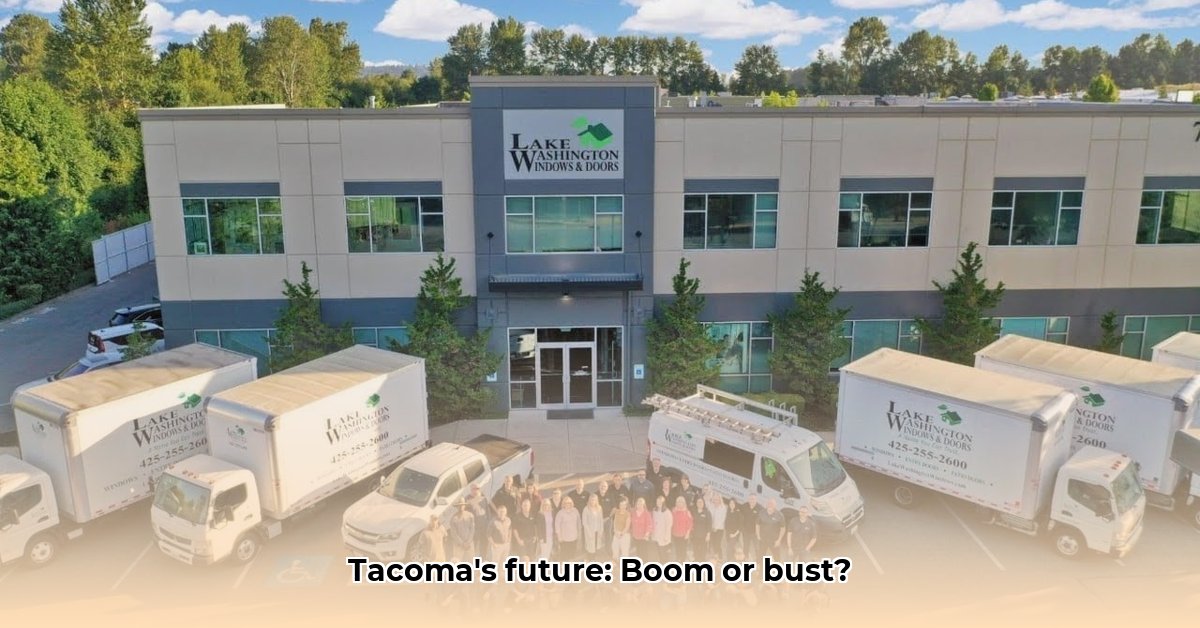
Washington Architectural Hardware (WAH) in Tacoma, Washington, a prominent supplier known for its contributions to projects like Garfield High School and St. John's Medical Center, recently announced a temporary closure. This unexpected development has sent ripples through Tacoma's construction and design community, prompting questions about the company's future and the broader implications for the architectural hardware market. This article examines WAH's history, analyzes the current situation, and explores potential scenarios for the future.
WAH's Past Success: A Foundation Under Scrutiny
For years, WAH built a reputation for reliability and quality, securing contracts for significant projects and establishing strong relationships with major manufacturers such as Adams Rite and National Guard. This track record demonstrates expertise and a capacity for handling large-scale undertakings. However, the current uncertainty raises questions about the sustainability of this success in the face of evolving market dynamics. How will this past success translate into navigating the current challenges?
The Current Situation: Unpacking the Uncertainty
The temporary closure has created considerable uncertainty. Crucially, concrete information about the reasons behind this closure remains limited. This lack of transparency has understandably heightened concerns among clients, competitors, and manufacturers alike. The architectural hardware industry is inherently competitive, with established national players and smaller local businesses competing for market share. This competitive landscape is further complicated by existing supply chain vulnerabilities, economic fluctuations, and evolving building codes.
What are the immediate concerns? Will WAH reopen? How will this affect ongoing projects? What strategic adjustments will competitors make?
For WAH's Leadership: Immediate priorities likely include identifying the root cause of the closure, conducting a thorough financial assessment, and developing a comprehensive reopening strategy. Long-term planning will likely include market adaptation and exploration of options such as mergers or strategic partnerships.
For WAH's Clients: The priority is finding alternative suppliers to minimize project disruptions. Careful review of existing contracts, coupled with a broader diversification of suppliers is critical for future risk mitigation.
For Manufacturers (e.g., Adams Rite): The situation necessitates assessing the impact on market penetration in the Tacoma region and potentially exploring alternative distribution channels.
For WAH's Competitors: The closure presents a significant opportunity to secure new clientele. However, it also underscores the inherent market volatility and the need for sustained competitive analysis.
A Look Ahead: Assessing the Risks and Opportunities
A comprehensive risk assessment is crucial to navigate this uncertainty. The following table outlines potential risk factors, their likelihood, potential impact, and corresponding mitigation strategies:
| Risk Factor | Likelihood | Potential Impact | Mitigation Strategies |
|---|---|---|---|
| WAH's Permanent Closure | Moderate | Severe | Client diversification; exploration of alternative suppliers. |
| Supply Chain Disruptions | Moderate | Moderate | Secure multiple supply sources; strategic inventory management. |
| Economic Slowdown | Moderate | Severe | Pricing adjustments; cost reduction measures. |
| Increased Competition | High | Moderate | Service specialization; strong client relationships. |
| Changes in Building Codes | Moderate | Moderate | Continuous monitoring of code updates; product adaptation. |
Building Codes: A Cornerstone of the Industry
Compliance with building codes and safety regulations is paramount in the architectural hardware sector. Non-compliance can lead to project delays, financial penalties, and irreparable damage to a company's reputation. For WAH's future, unwavering adherence to these regulations is non-negotiable.
Navigating Uncertain Tides: A Call for Adaptation
The future of WAH remains uncertain. However, a careful analysis of its past successes, current challenges, and potential future scenarios offers a framework for understanding its trajectory. The company's ability to adapt to the changing market climate will ultimately determine its success. The Tacoma construction industry stands to benefit from the creation of a more resilient and diversified supply chain. The need for continued monitoring and further analysis is evident.
Mitigating Supply Chain Risks: Lessons from WAH's Experience
The situation surrounding WAH underscores the critical need for robust supply chain risk management within the architectural hardware distribution sector. How can distributors proactively mitigate vulnerabilities and ensure business continuity?
Key Strategies for Risk Mitigation:
Diversify Supplier Base: Minimize reliance on single suppliers to enhance resilience against disruptions.
Implement Robust Due Diligence: Thoroughly vetting potential suppliers assesses financial stability, production capacity, and reliability.
Foster Strong Supplier Relationships: Collaboration strengthens communication and facilitates joint responses to challenges.
Leverage Data-Driven Decision Making: Track supplier performance, market trends, and external factors to anticipate risks.
Invest in Technology: AI-powered analytics can predict disruptions and inform strategic decision-making.
Develop Contingency Plans: Develop plans to mitigate impacts of supplier failures, natural disasters, and geopolitical instability.
Implement Real-Time Monitoring: Continuous supply chain monitoring allows for early problem detection and swift interventions.
Embrace Agile Supply Chain Structures: Flexibility enables rapid adaptation to changing circumstances and unexpected disruptions.
Optimize Inventory Management: Strategic inventory levels help buffer against unexpected supply disruptions.
These strategies offer a proactive approach to mitigating supply chain risks. The lessons learned from WAH's experience should serve as a critical reminder of the importance of long-term planning and resilience building within this dynamic market.